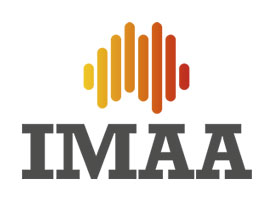
In the fast-evolving world of digital marketing, influencer marketing has become a force to be reckoned with. However, there's a new contender in the ring - UGC creators (sometimes referred to as Micro/Nanos creators) as a vehicle for creative assets for Spark ads or social formats. In this blog, we'll explore the key differences between these two approaches, helping you make informed decisions for your next marketing campaign.

Traditional Influencer Marketing
Traditional influencer marketing refers to a marketing strategy where brands collaborate with influential individuals, known as influencers, who have a substantial following and influence over their audience on social media platforms or other online channels. In this approach, brands leverage the influencer's credibility and reach to promote their products or services, often through authentic endorsements, sponsored content, or product placements, with the aim of connecting with a specific target audience and driving brand awareness, engagement, and sales.
When creating these campaigns brands should focus on:
- The Alignment With The Creator: Traditional influencer marketing revolves around the influencer, their reach, engagement, and the context of their content. The alignment of the influencer's content with the brand's message is crucial for campaign success.
- Reduced Client Control: Brands often have limited control over the creative process with traditional influencer marketing. The influencer may require more involvement and have a lesser approval process for the client.
- Targeted Audience Performance: Influencers typically tailor their content to resonate with their audience, but this might not always translate well when used in boosted social ads.

UGC Creators (Micro/Nano) for Spark Ads or Social Ads
Using UGC creators for social ads involves leveraging user-generated content (UGC) from content creators on platforms like TikTok, Instagram, or YouTube, to create engaging and compelling ads for social platforms. UGC creators produce authentic content that aligns with a brand's message or product. Brands collaborate with these creators to develop tailored content that resonates with their target audience, delivering a more relatable and effective ad experience, which can lead to increased engagement, brand awareness, and conversions within social ads.
These creators normally adopt a narrative structure that has been developed and optimised to drive the best engagement, awareness or conversion within the advertising formats of each platform.
When creating these campaigns brands should focus on:
- Casting the Right Talent: UGC creator campaigns focus on finding the right talent that can produce engaging content while adhering to the brand's narrative and objectives. Engagement rate, or the quality of their content is the key metric to look out for here.
- Client Approval Process: Unlike traditional influencer marketing, brands have more approvals allowed in UGC creator campaigns. Spark ads usually follow a specific format led by data insights and this needs to be considered when developing content.
- Results Over Following: While traditional influencer marketing emphasizes an influencer's following, UGC creator campaigns prioritize the demonstrated ability to generate results through their content.
- Not Necessarily Posted on Influencers' Pages: In UGC creator campaigns, the content may or may not be posted on the influencers' personal pages. It can be tailored specifically for social ad formats.
Pros and Cons of each:
Traditional Influencer Marketing:
Pros:
- Authenticity and credibility from the influencer's personal endorsement.
- Reach out to a well-defined target audience.
- Ability to establish long-term relationships with influencers.
- Built in organic reach with established creators
Cons:
- Less control over content creation and approvals.
- Results can vary depending on the alignment of the influencer's content with the brand.
- Limited data-driven insights for optimization.
- Based on creator selection it can occupy a large percentage of the budget
UGC Creators for Spark Ads or Social Ads:
Pros:
- More control and approvals in the content creation process.
- Ability to leverage data-driven insights for better performance.
- Emphasis on results rather than follower count.
- Cost efficient providing more budget for boosting activity
Cons:
- Requires a robust scripting and narrative structure to maximise quality
- Potential difficulty in finding the right creators who understand the brand's narrative. Learn more about how Fabulate Discovery can help automate this process
- Limited access to the influencer's established audience, reduced organic reach
In summary, when engaging with an established influencer, their content is primarily driven by their existing organic following, supplemented by any boosts from the brand. On the other hand, working with UGC creators for Spark ads is akin to casting talent for a traditional TV commercial but harnessing their prowess in crafting social media-centric creative. Both tactics have distinct approaches, and success lies in employing the right tool for the right marketing objective, leveraging the strengths of each method to achieve optimal results.
Reach out to Fabulate to learn more about how you can leverage creator talents to bring to life your marketing campaigns.




